
Security hardware provider Allegion (NYSE: ALLE) reported Q3 CY2025 results topping the market’s revenue expectations, with sales up 10.7% year on year to $1.07 billion. Its non-GAAP profit of $2.30 per share was 2.5% above analysts’ consensus estimates.
Is now the time to buy Allegion? Find out by accessing our full research report, it’s free for active Edge members.
Allegion (ALLE) Q3 CY2025 Highlights:
- Revenue: $1.07 billion vs analyst estimates of $1.04 billion (10.7% year-on-year growth, 2.5% beat)
- Adjusted EPS: $2.30 vs analyst estimates of $2.24 (2.5% beat)
- Management slightly raised its full-year Adjusted EPS guidance to $8.15 at the midpoint
- Operating Margin: 21.8%, in line with the same quarter last year
- Free Cash Flow Margin: 19.6%, down from 21.9% in the same quarter last year
- Organic Revenue rose 5.9% year on year vs analyst estimates of 4.4% growth (154.2 basis point beat)
- Market Capitalization: $15.07 billion
“Allegion’s third-quarter performance was defined by strong execution producing solid results,” Allegion President and CEO John H. Stone said.
Company Overview
Allegion plc (NYSE: ALLE) is a provider of security products and solutions that keep people and assets safe and secure in various environments.
Revenue Growth
A company’s long-term sales performance can indicate its overall quality. Even a bad business can shine for one or two quarters, but a top-tier one grows for years. Luckily, Allegion’s sales grew at a decent 8% compounded annual growth rate over the last five years. Its growth was slightly above the average industrials company and shows its offerings resonate with customers.
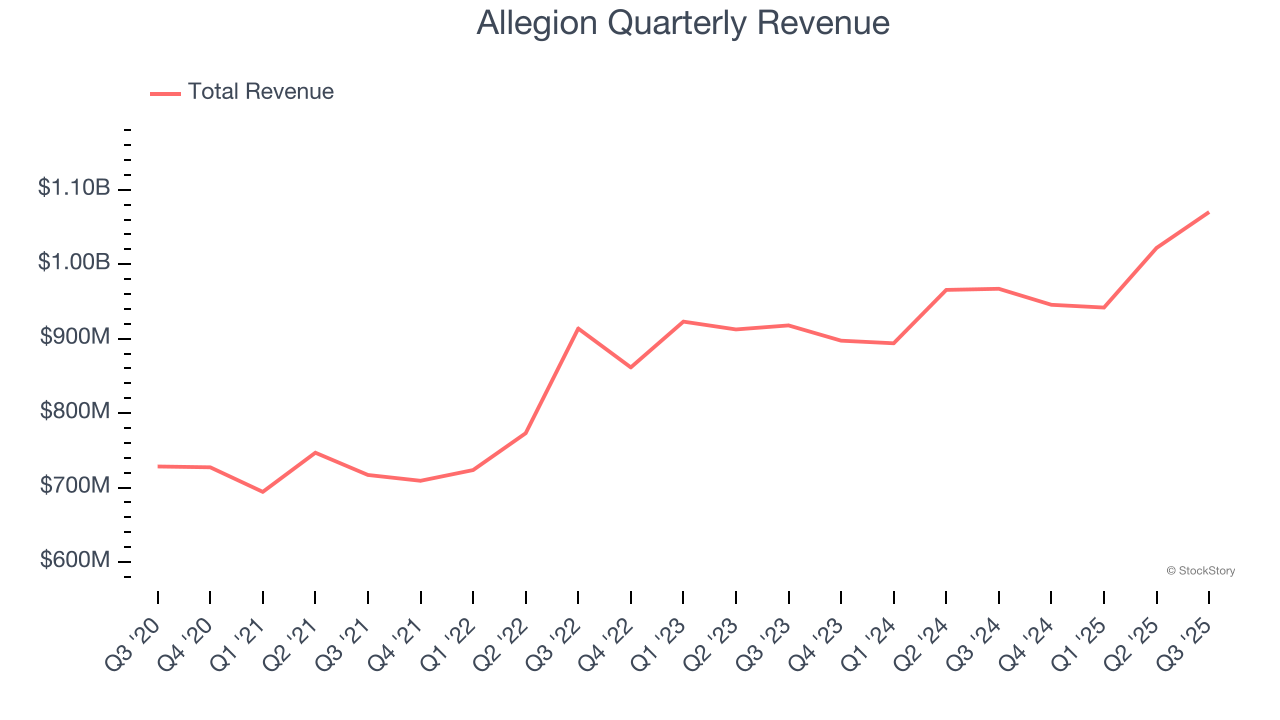
Long-term growth is the most important, but within industrials, a half-decade historical view may miss new industry trends or demand cycles. Allegion’s recent performance shows its demand has slowed as its annualized revenue growth of 4.9% over the last two years was below its five-year trend. We also note many other Electrical Systems businesses have faced declining sales because of cyclical headwinds. While Allegion grew slower than we’d like, it did do better than its peers. 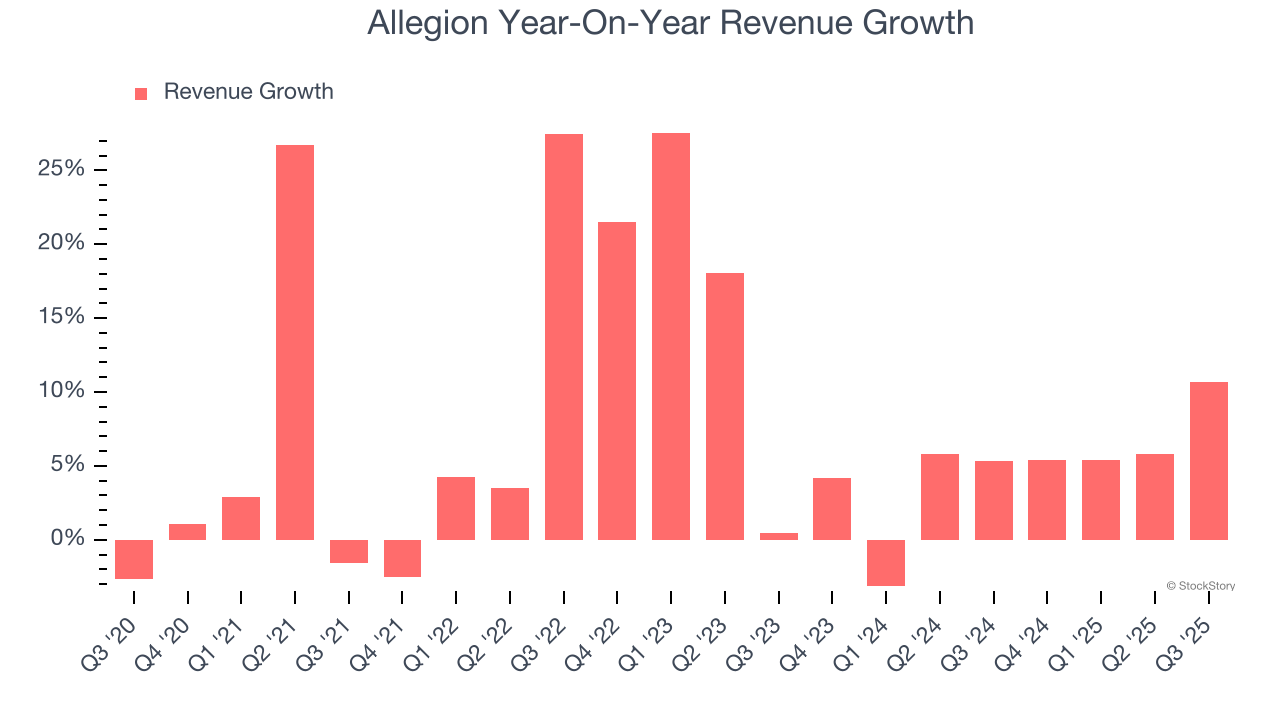
We can dig further into the company’s sales dynamics by analyzing its organic revenue, which strips out one-time events like acquisitions and currency fluctuations that don’t accurately reflect its fundamentals. Over the last two years, Allegion’s organic revenue averaged 3% year-on-year growth. Because this number is lower than its two-year revenue growth, we can see that some mixture of acquisitions and foreign exchange rates boosted its headline results. 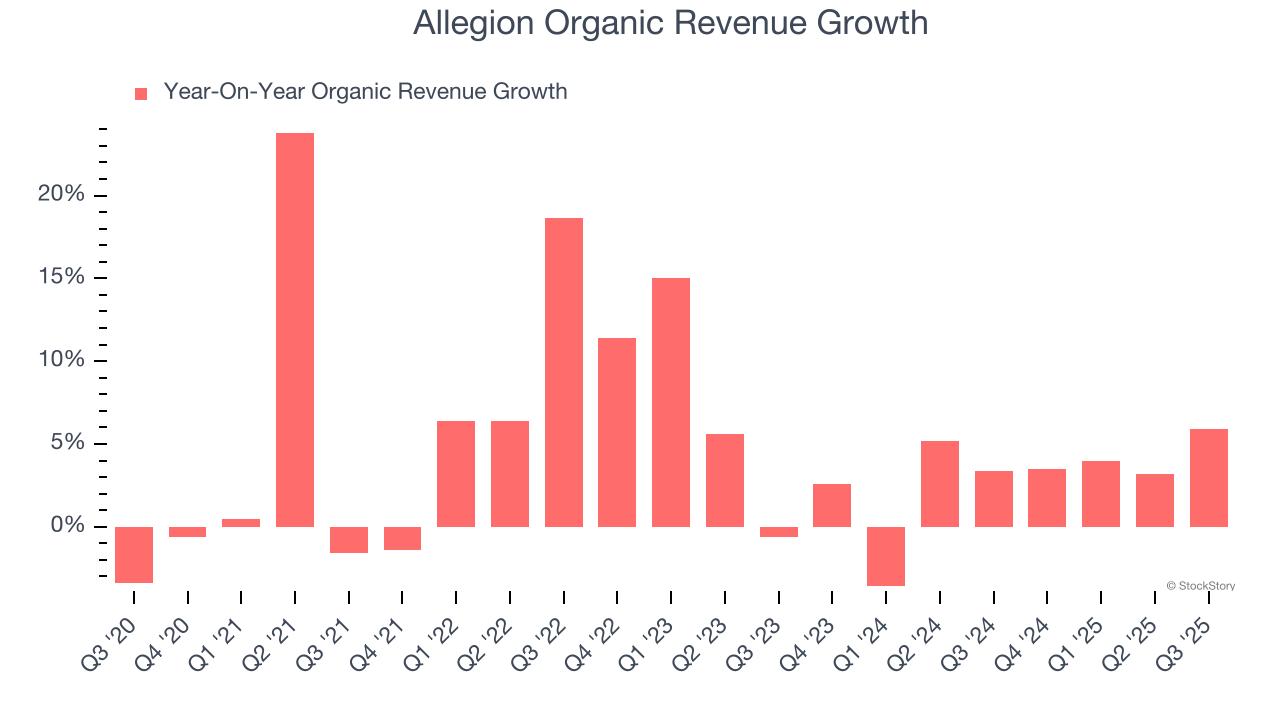
This quarter, Allegion reported year-on-year revenue growth of 10.7%, and its $1.07 billion of revenue exceeded Wall Street’s estimates by 2.5%.
Looking ahead, sell-side analysts expect revenue to grow 5.5% over the next 12 months, similar to its two-year rate. This projection doesn't excite us and implies its newer products and services will not lead to better top-line performance yet.
Here at StockStory, we certainly understand the potential of thematic investing. Diverse winners from Microsoft (MSFT) to Alphabet (GOOG), Coca-Cola (KO) to Monster Beverage (MNST) could all have been identified as promising growth stories with a megatrend driving the growth. So, in that spirit, we’ve identified a relatively under-the-radar profitable growth stock benefiting from the rise of AI, available to you FREE via this link.
Operating Margin
Operating margin is a key measure of profitability. Think of it as net income - the bottom line - excluding the impact of taxes and interest on debt, which are less connected to business fundamentals.
Allegion has been a well-oiled machine over the last five years. It demonstrated elite profitability for an industrials business, boasting an average operating margin of 19.5%. This result isn’t surprising as its high gross margin gives it a favorable starting point.
Looking at the trend in its profitability, Allegion’s operating margin rose by 2.5 percentage points over the last five years, as its sales growth gave it operating leverage.
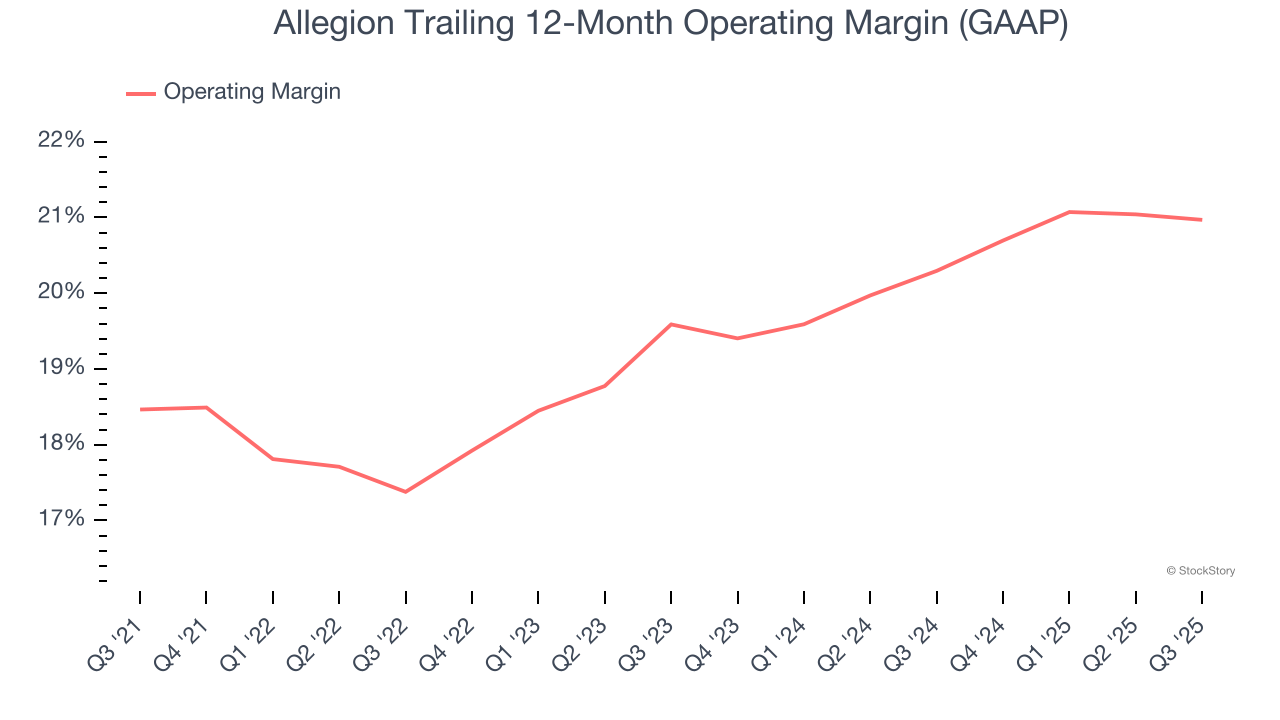
This quarter, Allegion generated an operating margin profit margin of 21.8%, in line with the same quarter last year. This indicates the company’s cost structure has recently been stable.
Earnings Per Share
We track the long-term change in earnings per share (EPS) for the same reason as long-term revenue growth. Compared to revenue, however, EPS highlights whether a company’s growth is profitable.
Allegion’s EPS grew at a solid 10.4% compounded annual growth rate over the last five years, higher than its 8% annualized revenue growth. This tells us the company became more profitable on a per-share basis as it expanded.
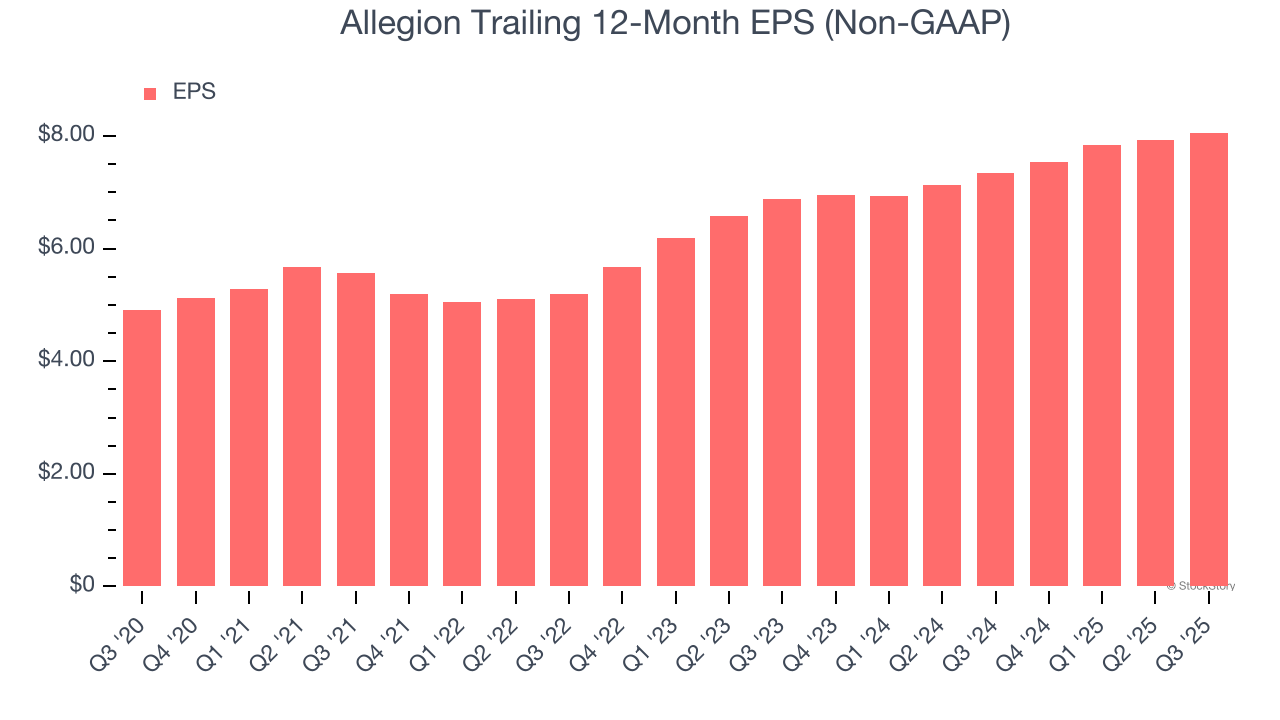
Diving into Allegion’s quality of earnings can give us a better understanding of its performance. As we mentioned earlier, Allegion’s operating margin was flat this quarter but expanded by 2.5 percentage points over the last five years. On top of that, its share count shrank by 6.7%. These are positive signs for shareholders because improving profitability and share buybacks turbocharge EPS growth relative to revenue growth. 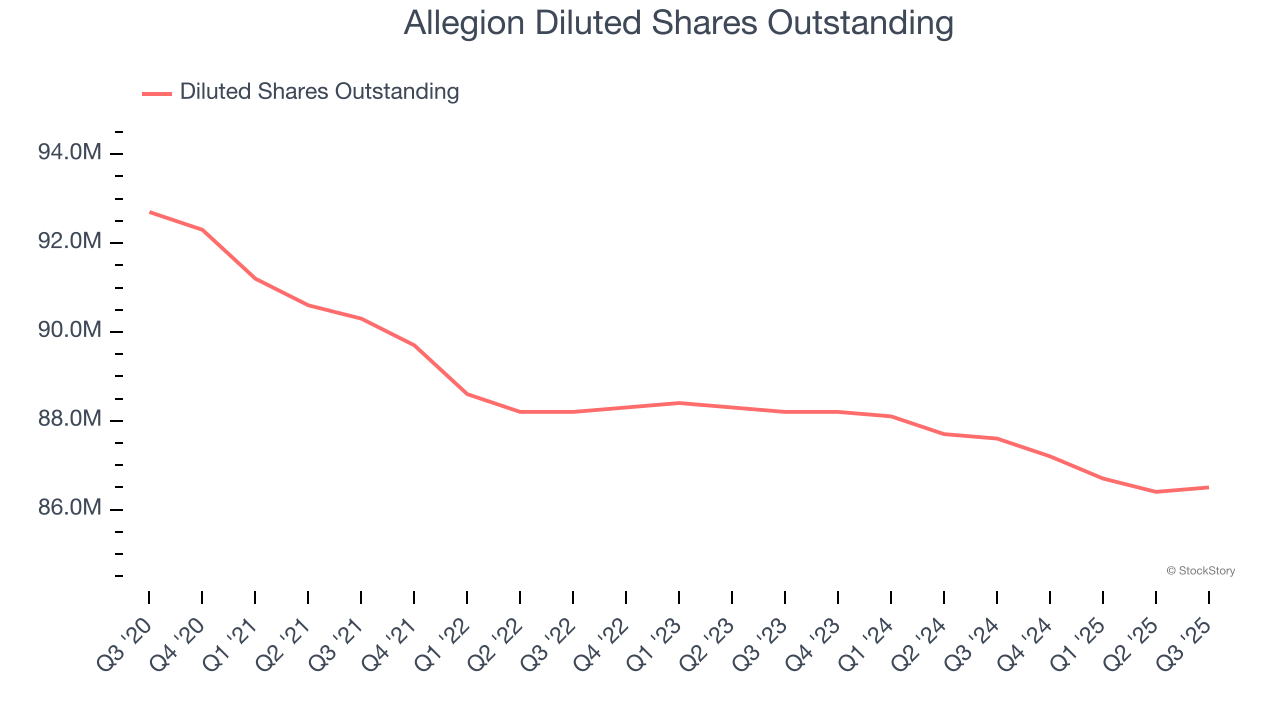
Like with revenue, we analyze EPS over a shorter period to see if we are missing a change in the business.
For Allegion, its two-year annual EPS growth of 8.2% was lower than its five-year trend. We hope its growth can accelerate in the future.
In Q3, Allegion reported adjusted EPS of $2.30, up from $2.16 in the same quarter last year. This print beat analysts’ estimates by 2.5%. Over the next 12 months, Wall Street expects Allegion’s full-year EPS of $8.06 to grow 2.9%.
Key Takeaways from Allegion’s Q3 Results
We enjoyed seeing Allegion beat analysts’ revenue expectations this quarter. We were also glad its organic revenue outperformed Wall Street’s estimates. Overall, this print had some key positives. The stock traded up 1.4% to $178 immediately after reporting.
Allegion put up rock-solid earnings, but one quarter doesn’t necessarily make the stock a buy. Let’s see if this is a good investment. When making that decision, it’s important to consider its valuation, business qualities, as well as what has happened in the latest quarter. We cover that in our actionable full research report which you can read here, it’s free for active Edge members.






